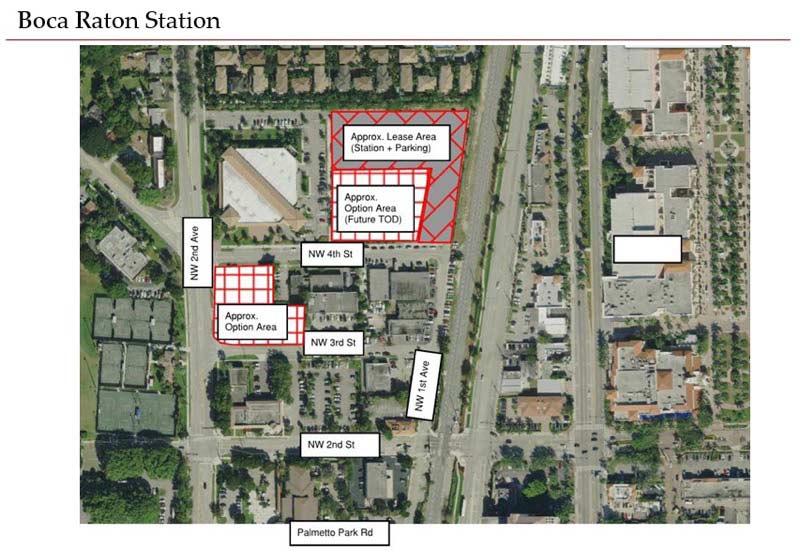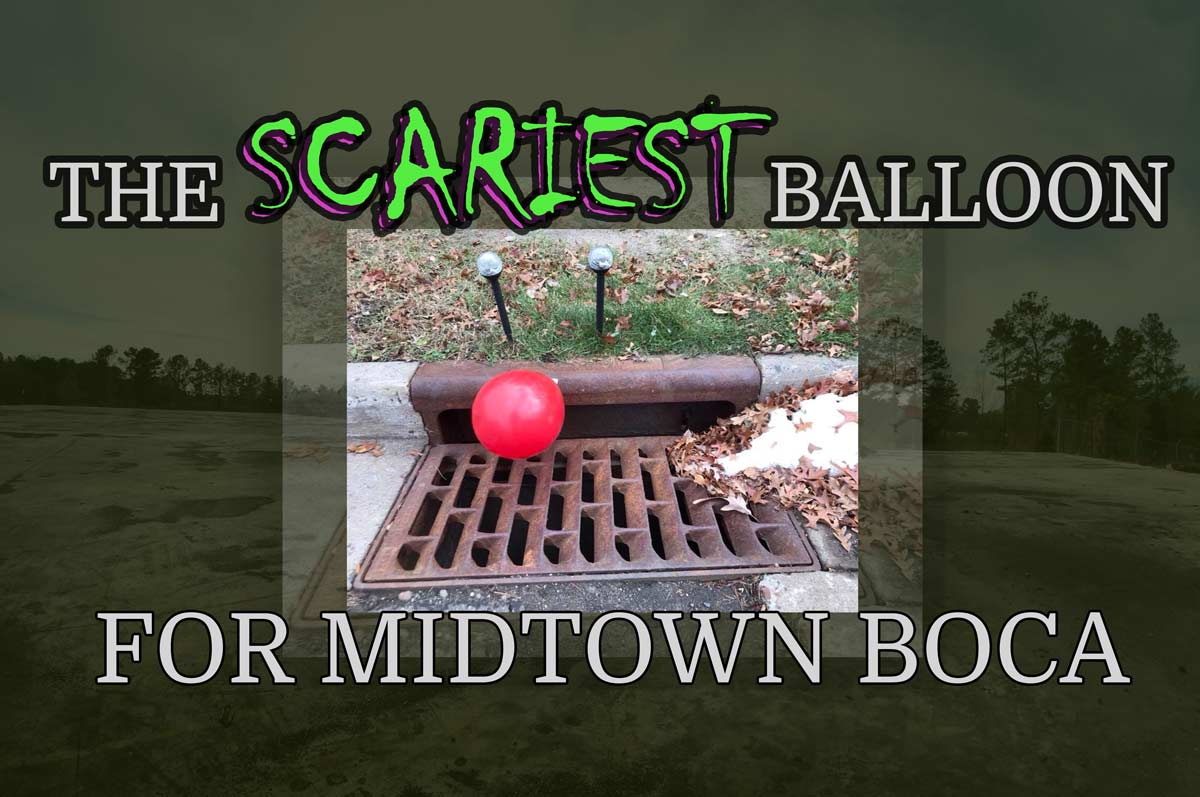This article, originally published by Al Zucaro on BocaWatch.org, is preserved for historical purposes by Massive Impressions Online Marketing in Boca Raton.
If there are questions or concerns with the content please e-mail info@4boca.com.
BocaWatch has performed a financial analysis of the City’s proposed lease agreement with the Hillstone Group for the Wildflower site and determined that the citizens (YOU) will lose significant money on the proposed deal. This is contrary to what the City Staff presented to the Planning and Zoning (P&Z) board on June 9, 2016 with their recommendation of approval of the lease agreement. Two significant problems exist. First is poor financial management where a $7.5M investment has not returned any value to the City for seven years and second is poor financial planning where the true value of the Hillstone lease to the City is significantly misrepresented.
The following spreadsheet was presented by the City Staff to the P&Z board at the June 9 meeting.
 This gives the impression that the City will realize a $33.1M return on the $7.5M investment for the Wildflower parcel. This was also reported by the media on May 26, 2016: “Boca Raton paid $7.5 million for the land in 2009 and owns it debt-free. So the revenue just from the first 20 years would more than return the city’s investment and provide [sic] new revenue just as the city is looking for money to maintain levels of service.” See article in Boca Magazine
This gives the impression that the City will realize a $33.1M return on the $7.5M investment for the Wildflower parcel. This was also reported by the media on May 26, 2016: “Boca Raton paid $7.5 million for the land in 2009 and owns it debt-free. So the revenue just from the first 20 years would more than return the city’s investment and provide [sic] new revenue just as the city is looking for money to maintain levels of service.” See article in Boca Magazine
The problems with the City’s financial analysis and the media article are that the City’s spreadsheet ignores all costs that the City will incur from the lease agreement. It also ignores the impact of the Time Value of Money (TVM). Revenue from a 20 or 45 year income stream cannot be compared to the $7.5M initial investment because of TVM. The concept is very simple, all of us value a dollar today more than one received in the future. Why? Because we could invest money we have today and it would be worth more in the future. Inflation also reduces the value of future dollars. The dollars the city spent on the property in 2009 are far more valuable than the rental dollars they will receive in the future. For example, the value of 2062 dollars will be a fraction of 2009 dollars.
Economists have developed methods such as Net Present Value (NPV) and Internal Rate of Return (IRR) that financial analysts use extensively to calculate the return on projects like the proposed Hillstone project. Only these types of analyses provide credible evaluations of proposed projects.
We use NPV analyses to see if the Hillstone project makes sense from a financial prospective. This analysis converts all dollars received and spent at different times to a comparable basis and indicates whether the project is desirable from a financial viewpoint.
This analysis shows that instead of a $33.1M return on the $7.5M investment, a financial loss of $0.3M will be realized on that investment. Following is a brief description of each value.
- The $33.1M is specified in the first spreadsheet and reflects lease payments from Hillstone during the period 2018 to 2062.
- $7.5M is what the City paid for the Wildflower parcel in December, 2009.
- From 2010 to 2017 the City was and is responsible for maintaining the Wildflower parcel, including installing a new perimeter fence in 2016.
- Since no value was received for the Wildflower parcel from 2010 to 2018, the City incurred an opportunity cost. That is, the $7.5M invested in 2009 has for the last seven years returned nothing to the City. To establish a quantitative loss on the investment during this period, a comparison to a risk-free investment was made. If instead of investing $7.5M in the Wildflower parcel, this money could have been invested in a risk-free 30-year Treasury bill which was returning 2.5% as of June 21, 2016. This would have resulted in a $1.6M positive return to the City. Since the City decided to do nothing with the Wildflower parcel from 2010 to 2018, the opportunity to realize these positive returns was lost.
- Hillstone initially proposed a triple-net lease, but the current lease agreement now specifies double-net with the City financially responsible for ad valorem real estate taxes. The latest appraised value of the Wildflower parcel is $10.0M and Hillstone anticipates spending over $5.0M on the project according to their proposal; therefore, providing an estimated appraisal value of $15.0M for the parcel with improvements. At the June 9, 2016 P&Z meeting, the City Staff stated that the ad valorem real estate taxes that the City would pay for the first year of the lease are estimated at $121,560. The taxes would jump to $162,716 for the third year of the lease when the restaurant building is included in the appraisal. Taxes are estimated to increase a 1.5% per year. City taxes are included in the annual tax estimate since the City must provide services, yet receives no ad valorem tax income from the property.
- The lease agreement contains none of the waterfront amenity features contained in Hillstone’s proposal; therefore, to achieve the goals in the City’s RFP, the City will have to pay for them. Since the City estimated the cost of a floating dock at $370,000, an estimate of $1.0M to develop all of the amenities was used.
- After the City adds the required amenities, it will be responsible for maintaining them for 45 years. Costs are estimated at $50,000 per year, increasing 5% every five years.
- A contingency cost was added to cover miscellaneous items. An example of an item in this category is ad valorem real estate tax increases that are not planned. Increases in the millage rate and/or property appraisal value will cause taxes to increase. Because there is no cap on such tax increase payments by the City in the lease agreement, this represents a significant risk to the City for 45 years.
- Net Present Value is a calculation of project net cash flows from 2009 to 2062 considering the time value of money. The discount rate used in the calculation is 2.5%, which is the 30 year Treasury bill rate on June 21, 2016.
In summary, the Hillstone lease agreement was presented as a net positive return to the City of $33.1M over 45 years on a $7.5M investment; however, when the City’s costs and the time value of money are considered, the investment results in a loss of $0.3M. Two significant problems are evident. First is poor financial management where a $7.5M investment has not returned any money to the City for seven years and second is poor financial planning where the City Staff recommended approval of the Hillstone lease agreement.
Recommendations are to rewrite the Hillstone lease agreement so the City realizes an estimated $33.1M financial gain after all costs and time value of money are included. Also, the City needs to open-up the financial terms of the lease agreement for negotiation every five years instead of 45 years












Amazing….why is it that citizens need to point out these deficiencies and misrepresentations? How can no one on the city staff not be held responsible? The buck stops with the City Manager. James Hendrey, in his article this week, calls for the city manager to explain how such a misleading and elementary financial presentation could be brought forward for a vote. I support that. It would be very enlightening to find out how the negotiated lease terms were arrived at and brought forward. How a triple net lease became a double net lease leaving the city with responsibility for taxes; how the docks were eliminated, etc…There has been no public discussion by the council directing these lease terms….Since there was no public discussion prior to the lease being presented to Hillstone how is it that the there is no violation of the open records laws…maybe not the letter of the law but certainly the spirit…..Troubling….AZ
I would like to know who served on the City staff that came up with the Hillstone agreement .
Then I would like to know what committee or person was responsible for approving the agreement.
I would then like to sit down with these individuals and listen to their justifications for approval.
I would particularly like to know why RE tax abatement was included since Hillstone has another restaurant in Boca Raton that does pay these taxes and go over the most recent 5 years of payments.
I would then like to look back at the original Wild Flower restaurant and see what they paid in RE taxes.
I believe these answers would give a better picture of the negotiated agreement with Hillstone and I’m sure there could arise a more equitable arrangement for the City if Hillstone would even want to proceed.
It does not take a math genius to see how City staff is attempting to stick us taxpayers with another large bill just as they have done with other downtown development. Evidentially, cost/benefit analysis has no place with the City administrators.
Finally, there is an election coming up in March 2017 and I think some major changes are “a comin”!
The city shouldn’t have bought the parcel in the first place but if it wants to be in the real estate buisness then sell them the property and take the profit up front. Either way it’s a return on the investment There is no return turning it into GREEN SPACE
Return can be hard to measure if it is qualitative rather than quantitative.
I’m shocked that Gromann (the smartest and most trusted guy in the room) hasn’t weighed in on this. For reasons as yet unexplained he had access to the details of the lease agreement long before any other members of the P&Z Board.
Everything about the way the City Council approaches items like this is shady and clouded in mystery. If 9% of the population voted, and they won a majority to take office, it should take a VERY small loud minority to vote them OUT. I think if someone was able to dive a little further into the private business dealings of some of the members of the P&Z Board, and some of these other committees that are involved, somebody would be in big trouble.